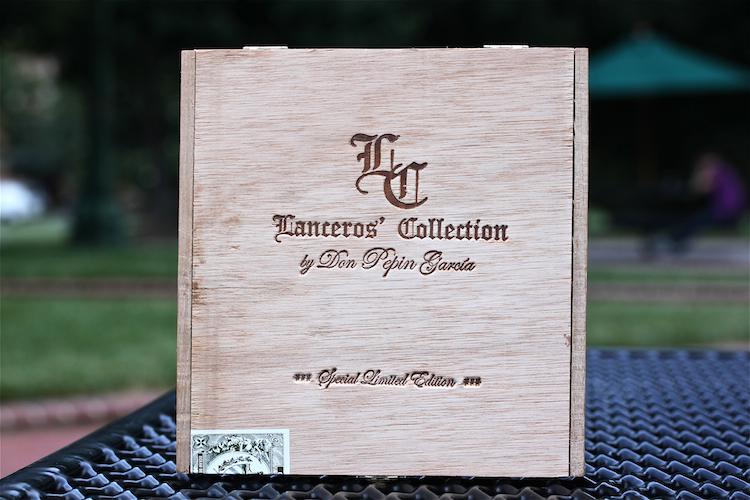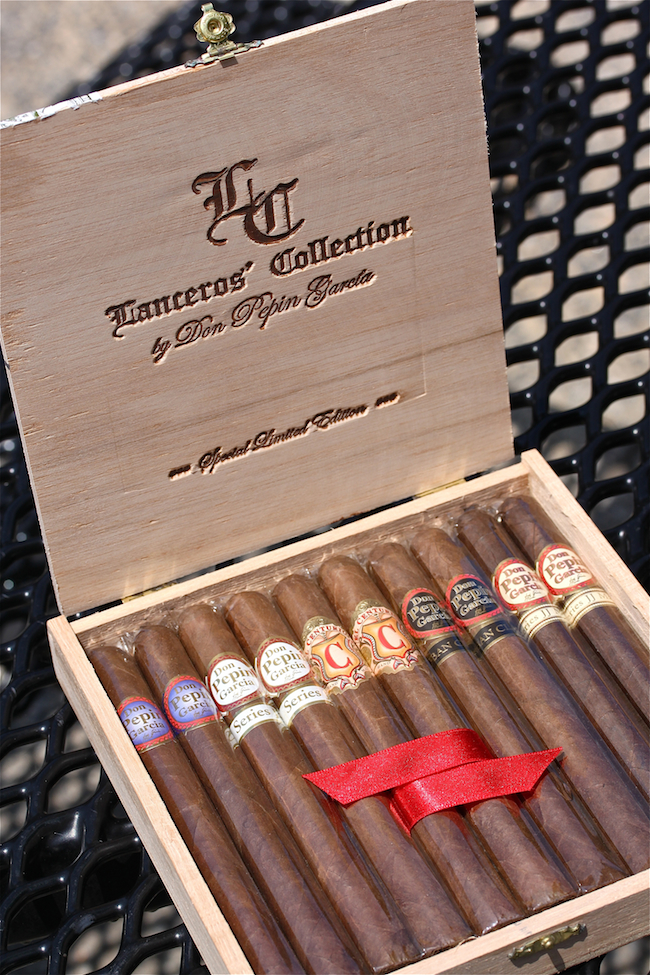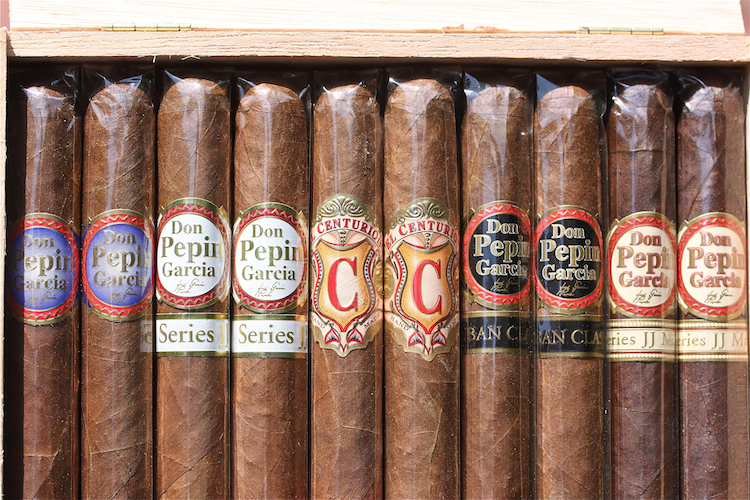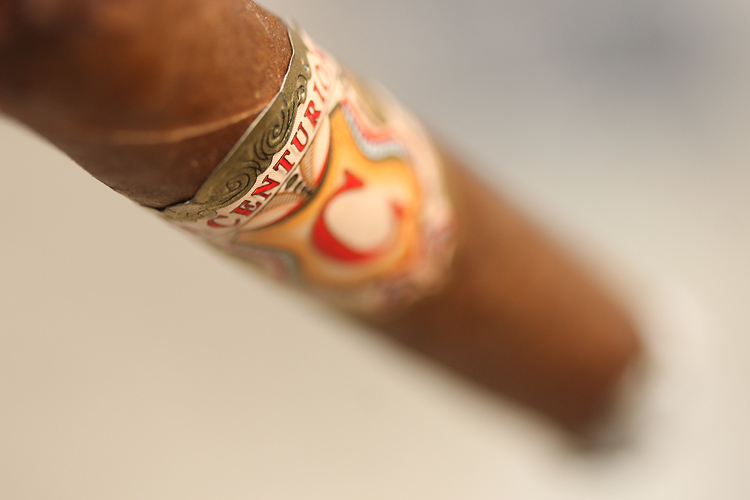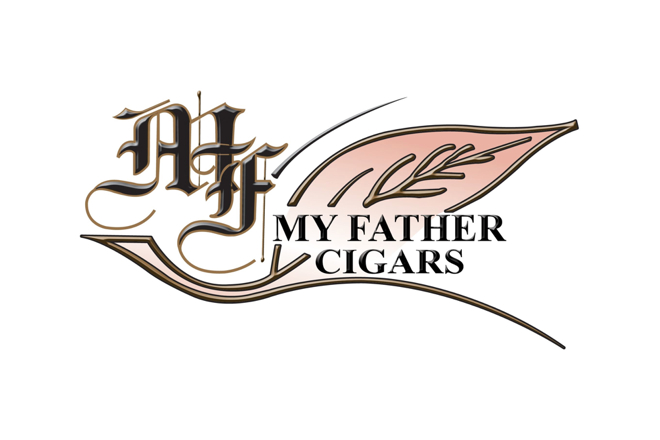In December 2007, El Rey de los Habanos, Inc. released the Lanceros’ Collection by Don Pepín García.
Inside each sampler were 10 cigars, two each of five of the blends the company was making at that time. Each cigar was made in a 6 7/8 x 42 parejo vitola that is about as close to a traditional lancero as it is to a lonsdale.
I was not smoking cigars when the samplers came out, but a few years later I learned about them and began searching to find some. Fortunately, lanceros aren’t all that popular—and they certainly weren’t popular then—so retailers that still had inventory were offering discounts. I don’t know how many samplers I bought, but there might have been one week when I bought five samplers.
I was most interested in this cigar: the El Centurion Lancero. At a time, it was one on my personal list of white whales.
In 2007, El Rey de los Habanos released El Centurion, described at the time as follows:
“EL CENTURION” is the result of a careful selection of leaves grown of Cuban seeds, which have been matured for three years under the strictest conditions of industry standards. In this process, we have used two varieties of plants from Nicaragua: Criollo 98 and Corojo 99. It is a “Medium to Full Bodied” cigar and one of the most exquisite ones you have ever tested.
It was offered in four vitolas, though the only way to get the lancero was through the sampler, while the other three were sold in standalone boxes:
- El Centurion Guerreros (5 x 50) — 850 Boxes of 20 Cigars (17,000 Total Cigars)
- El Centurion Gladiadores (6 1/2 x 52) — 850 Boxes of 20 Cigars (17,000 Total Cigars)
- El Centurion Emperadores (5 1/2 x 52) — 850 Boxes of 20 Cigars (17,000 Total Cigars)
- El Centurion Lancero (6 7/8 x 42) — 1,000 Samplers of 2 Cigars (2,000 Total Cigars)
The hook with El Centurion, as it often is with cigars, is that it was a personal blend of the cigarmaker, which in this case was José Pepín García. Perhaps due to its higher prices, the original El Centurion never really seemed to catch on, and from what I gathered, it was a one-and-done limited edition.
In 2013, My Father Cigars, Inc.—the successor to El Rey de los Habanos—brought back El Centurion in a different blend and has since added other El Centurion blends.
The Lanceros’ Collection by Don Pepín García samplers were made at Tabacalera Cubanas S.A., the first Nicaraguan factory that the García family used before building the palatial My Father Cigars S.A. factory. There were 1,000 samplers made, each with an MSRP of $110.
Inside were the following cigars. I’ve left my more colorful descriptions of the cigars, which harken back to TheCigarFeed, a predecessor of halfwheel:
- Don Pepín García (Blue Label) — The only cigar to be offered as a regular production Lancero, just in different dimensions. The Fundadores is the regular production “Blue Label” Lancero, but it measures a traditional 7 1/2 x 38. This cigar (6 7/8 x 42) was, however, released in two other batches for Puff n’ Stuff of Decatur, GA. There were a total of 250 boxes of the Blue Labels for Puff n’ Stuff made, although 50 of the 2008 batch were sent back for draw problems. (Presumably, these are the same cigars, but that’s not been confirmed.)
- Don Pepín García Series JJ — Never offered outside of the sampler in Lancero format.
- El Centurion — The official word is that there were only 50,000 cigars released. However, 850 boxes of the original three sizes were released, which adds up to 51,000. Then add the 2,000 Lanceros made, and it turns out there were 53,000 El Centurions made. Pepín has said to use a modified El Centurion blend when rolling at events, and he has been known to roll Lanceros.
- Don Pepín García Cuban Classic — The only other size to be released elsewhere, although like the Blue Label, it had different dimensions. Victor Vitale of The Cigar Agency had 100 boxes of 50 made for him back in 2008. The cigars were 7 x 39s, and some boxes were still available as of late last year.
- Don Pepín García Series JJ Maduro — Never offered outside of the sampler in Lancero format.
I first reviewed the cigar as the conclusion to Lancero50, a series that involved me reviewing 50 different lanceros in 50 days during the summer of 2011. When halfwheel launched in 2012, the El Centurion Lancero was one of the first cigars I reduxed for what was then this new cigar blog.
Here’s what I said when I reviewed it in May 2012:
Smoke ’em if you got ’em. At this point in time, as difficult as it might be for me to accept it, the JJ Lancero and JJ Maduro Lancero are smoking better. This is still an excellent cigar with an immense amount of complexity, but it has turned down the level of greatness. We can debate about the tobacco and whether this would have been better as a true El Laguito No.1, but you can put this right alongside legends like the Pork Tenderloin, SW Maduro, original JJs and older Padillas for being amongst the greatest of cigars that have come from García father and son.
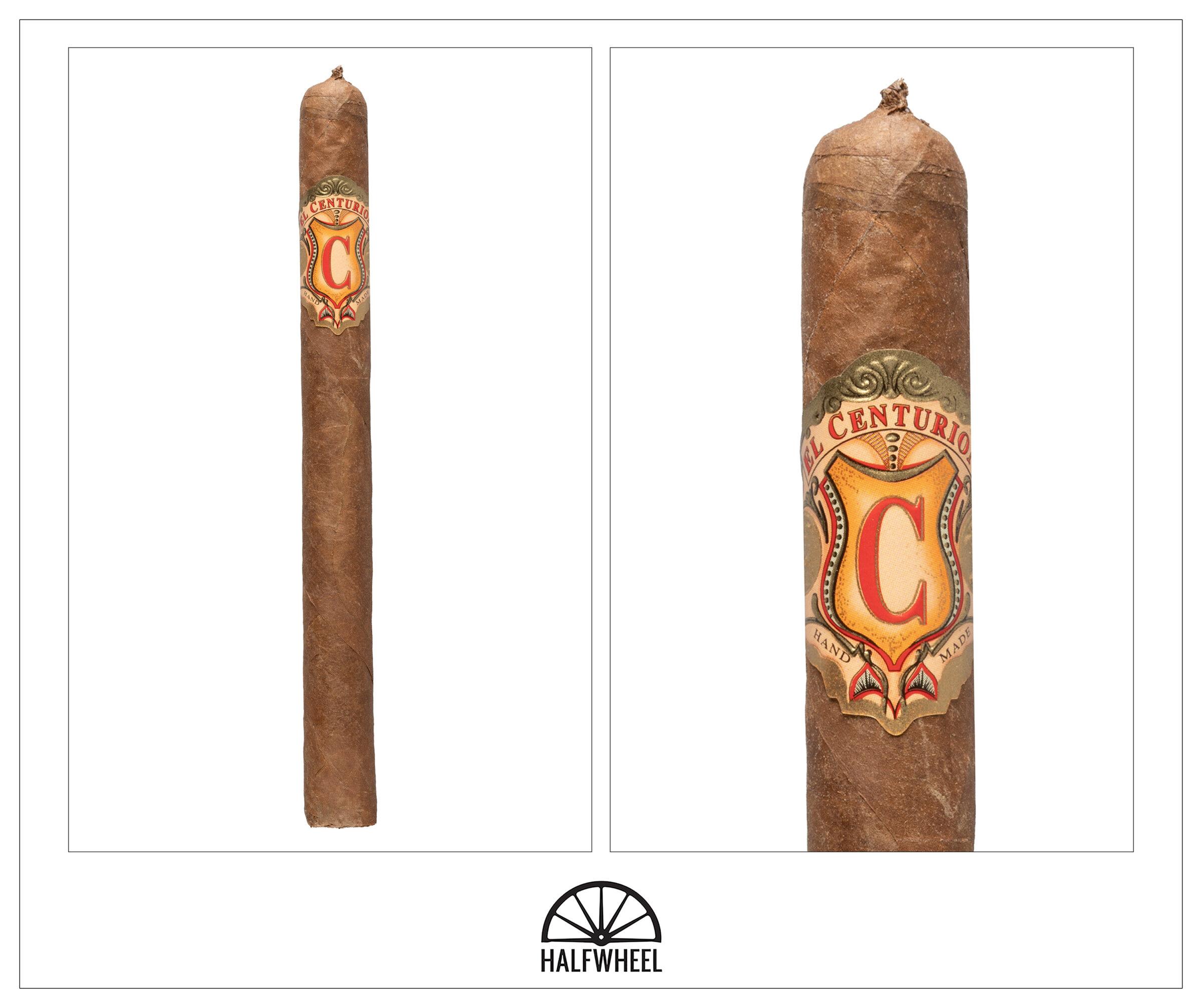
- Cigar Reviewed: El Centurion Lancero
- Country of Origin: Nicaragua
- Factory: Tabacalera Cubana S.A.
- Wrapper: Nicaragua (Habano)
- Binder: Nicaragua
- Filler: Nicaragua (Corojo 99 & Criollo 98)
- Length: 6 7/8 Inches
- Ring Gauge: 42
- Shape: Round
- MSRP: $11 (Samplers of 10, $110)
- Release Date: December 2007
- Number of Cigars Released: 2,000 Boxes of 2 Cigars (4,000 Total Cigars)*
- Number of Cigars Smoked For Redux: 1
*Each sampler contained two El Centurion Lanceros.
Note: Since halfwheel launched in 2012, we have started off each new year with a week of reviews that are different from the other parts of the year. Rather than reviewing new cigars, we try to find cigars people might consider a holy grail cigar. These reviews are scored the same as our regular reviews, though oftentimes we are only able to procure one of the cigars, so many of these reviews are based on smoking one cigar instead of our normal three cigars per review. You can read more Holy Grail Week reviews by clicking here. — Charlie Minato.
Most of the cigars we review are new cigars, almost guaranteeing that I haven’t had that much experience with them; that’s not the case here. There was once a time when I was smoking a lot of these. After all that time, the cigar still looks the same: a slightly shorter lancero vitola with a wrapper that is lighter than the median. I can see that the cellophane has yellowed somewhat, though it’s probably not as dark as a lot of people would expect after 17 years. I’m pleasantly surprised to see that the pigtail is still attached, which makes me remove the cigar from the cellophane even more carefully than I had planned. There’s a natural box press that has developed at the foot of the cigar, though the rest of it retains its round shape. Despite being in cellophane, the wrapper doesn’t have much in the way of aroma: medium-plus with some hints of newspaper and cocoa powder, but it mostly just smells like tobacco. The foot is medium-full and leads to an actual smile, as it reminds me of the El Rey de los Habano era cigars, before the launch of My Father. There’s a medium-full scent with a very sweet milk chocolate that is wrapped around chili flakes. It’s not about whether those cigars were better than the current era, but it was a different era for both the family’s cigars and my relationship with cigars as a whole. As is often the case with aged cigars, the cigar is drier than a new cigar. There’s still some give, but I’m careful while cutting and am thankful that there’s no tearing. Cold draws remind me of saltine crackers with touches of floral flavors, wood and pepper, though it’s very mild.
The El Centurion Lancero begins medium-full with dry woodiness, saltine crackers and then some strawberry jam and hints of juicy tomatoes before the saltine cracker takes over as the finish. That’s how the first inch or so goes, though some puffs introduce creaminess, woodiness and pepper, but those flavors aren’t consistent. At around an inch, a soapy quality emerges—more soap than a hop—though after five minutes, it fortunately disappears. In its wake, the profile turns more towards nuttiness and woodiness, with floral sweetness and the mildest of pepper serving as accents. The finish reminds me of butter with some salt and dry fall leaves underneath. Retrohales have the dry leaves flavor leading some muted berries and a chemical-like burn underneath. Right after I take the picture below, the ash falls off. While the flavor in the mouth remains the same, the retrohale is getting spicier. Leather replaces the fall leaves flavor, there are secondary notes of earthiness and salt, but the largest change is the emergence of horseradish and black pepper. That extends to the finish, which is even sharper than when the smoke is just leaving the nostrils. One unique part is that the retrohale’s finish is only impacting my tongue and seemingly doing nothing in my nose. Flavor is full, while body and strength are medium. Construction is excellent.
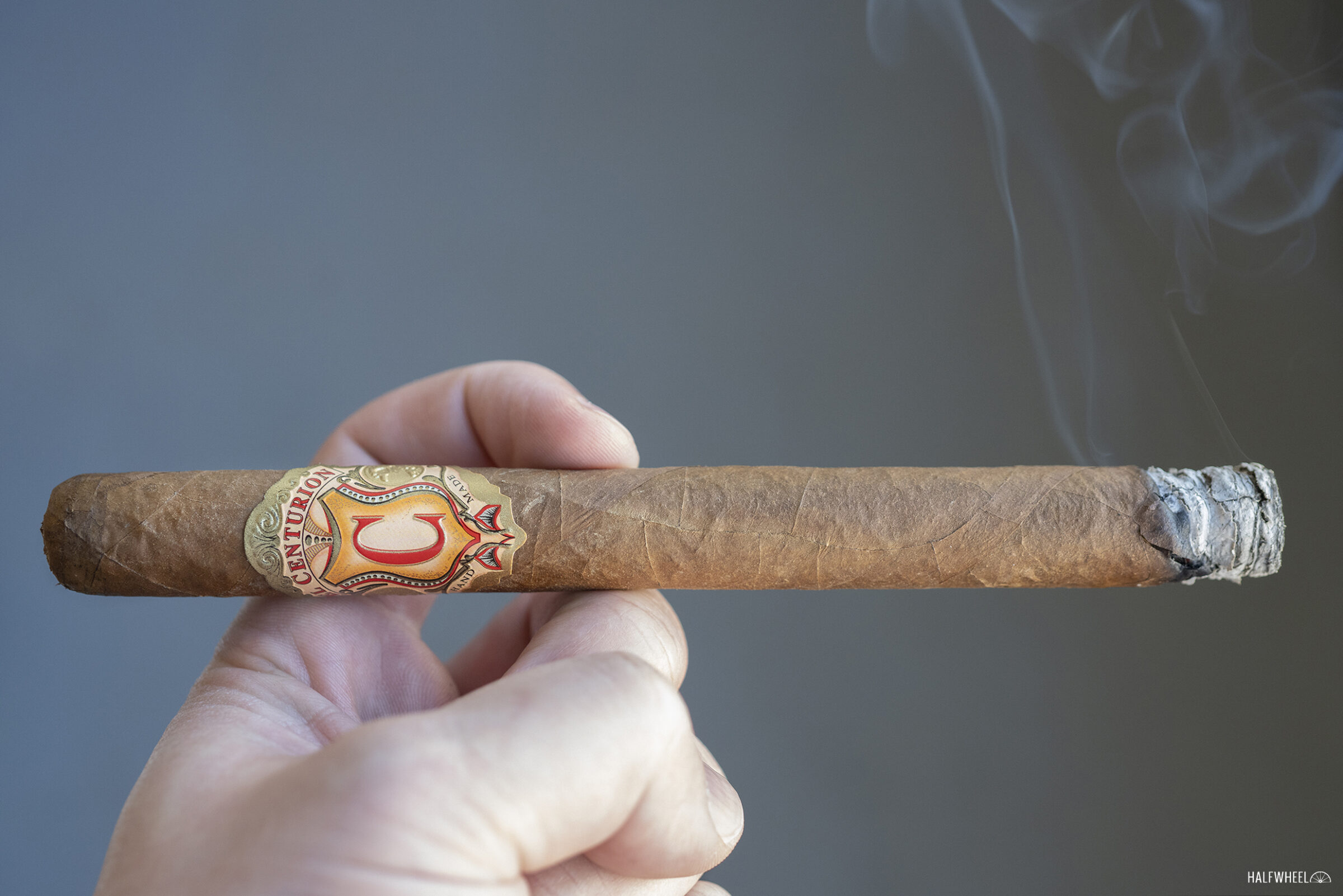
I don’t know if the spicy parts of the profile increase more as the final third nears, but the sharpness is lingering a lot more than it was two inches ago. There are points when I wonder if this is just how it’s going to be: blasts of sharp flavor over some earthiness. Aging cigars for this long is an art and sometimes it doesn’t end up all that enjoyable. At some point, those concerns are put to bed, as creaminess takes over and most of the sharpness leaves. Despite those changes, the secondary flavors—earth, dry leaves, and salt—remain. As the final third nears, a sweet, woody flavor emerges—more like a Cuban H. Upmann than an OpusX— which pairs nicely with a developing black pepper. Retrohales get a lot smoother with nuttiness and leather leading creaminess and touches of white pepper and grapefruit. They finish with an even sweeter wood flavor joined by creaminess, potato starch, mild black pepper and some sweet grapefruit. Flavor finishes medium-full, body is medium, and strength is medium. From start to finish, construction is excellent.
One bit of disclosure: the three reviews have been done at three very different times and three very different scoring rubrics. Had the earlier reviews been done with the current scoring system, those scores would be lower. For me, redux reviews are never really about comparing scores. About halfway through the El Centurion Lancero, it seemed like the basic take was going to be fairly predictable: here’s a great cigar that aged too long and is now a shell of itself. That’s probably still true, but the cigar had one last trick up its sleeve. The final two inches of the cigar were a complete departure from the trajectory that was established in the second third, providing a rich and detailed interplay between some common themes that I think many want in a cigar: smooth, sweet, creamy and spicy. In many ways, it reminded me of what I hope to get from an aged Cuban cigar. While I never knew what these cigars smoked like when they were first released, I much prefer what the cigar tasted like after a decade ago compared to now. That said, it’s still a cigar with great bones, one I’d gladly smoke again, though I’m unsure if I have any left at this point. But that’s one of the key tenets of Holy Grail week: smoke your special cigars, even if they're probably too old and too rare for you to ever find another one. Smoke 'em if you got 'em.

